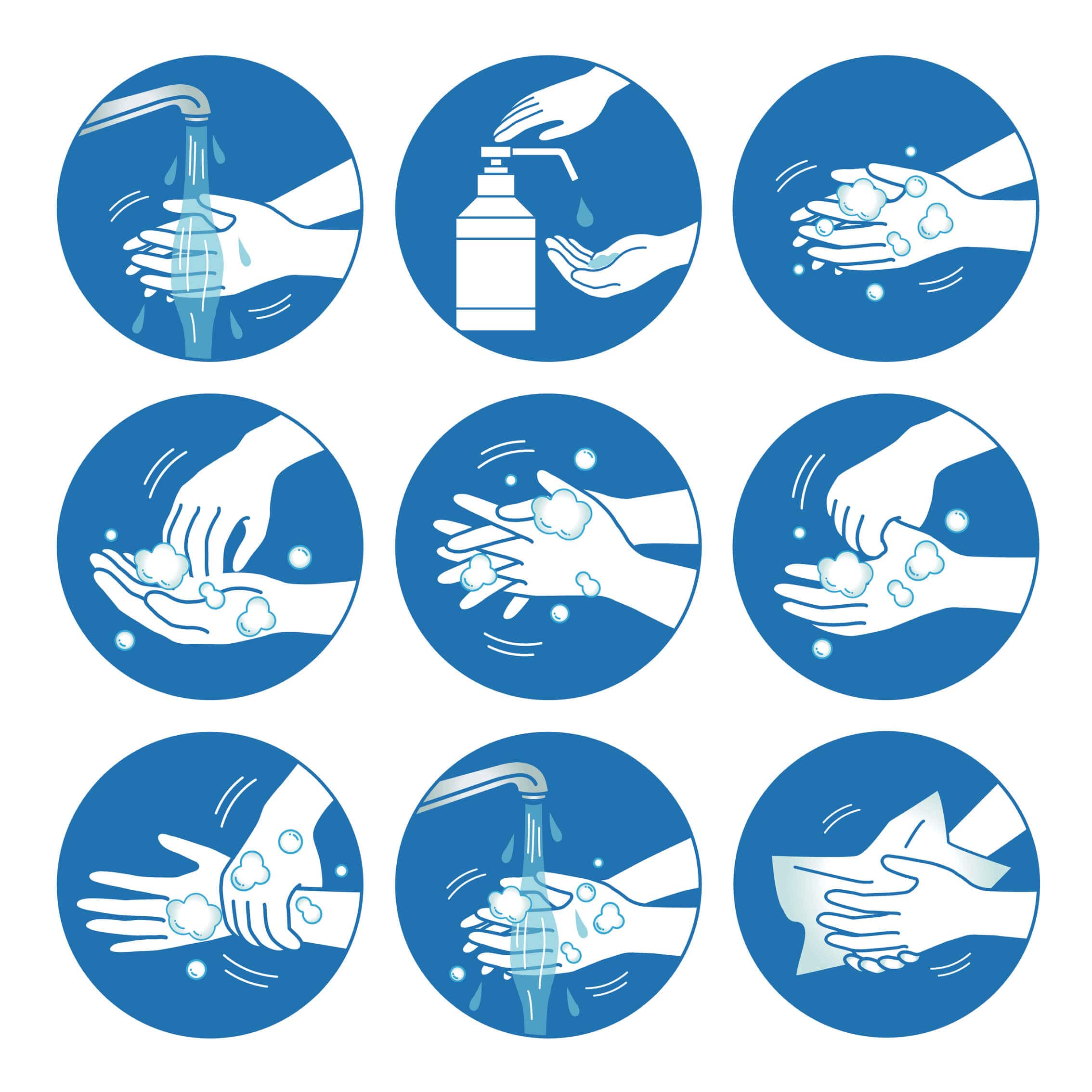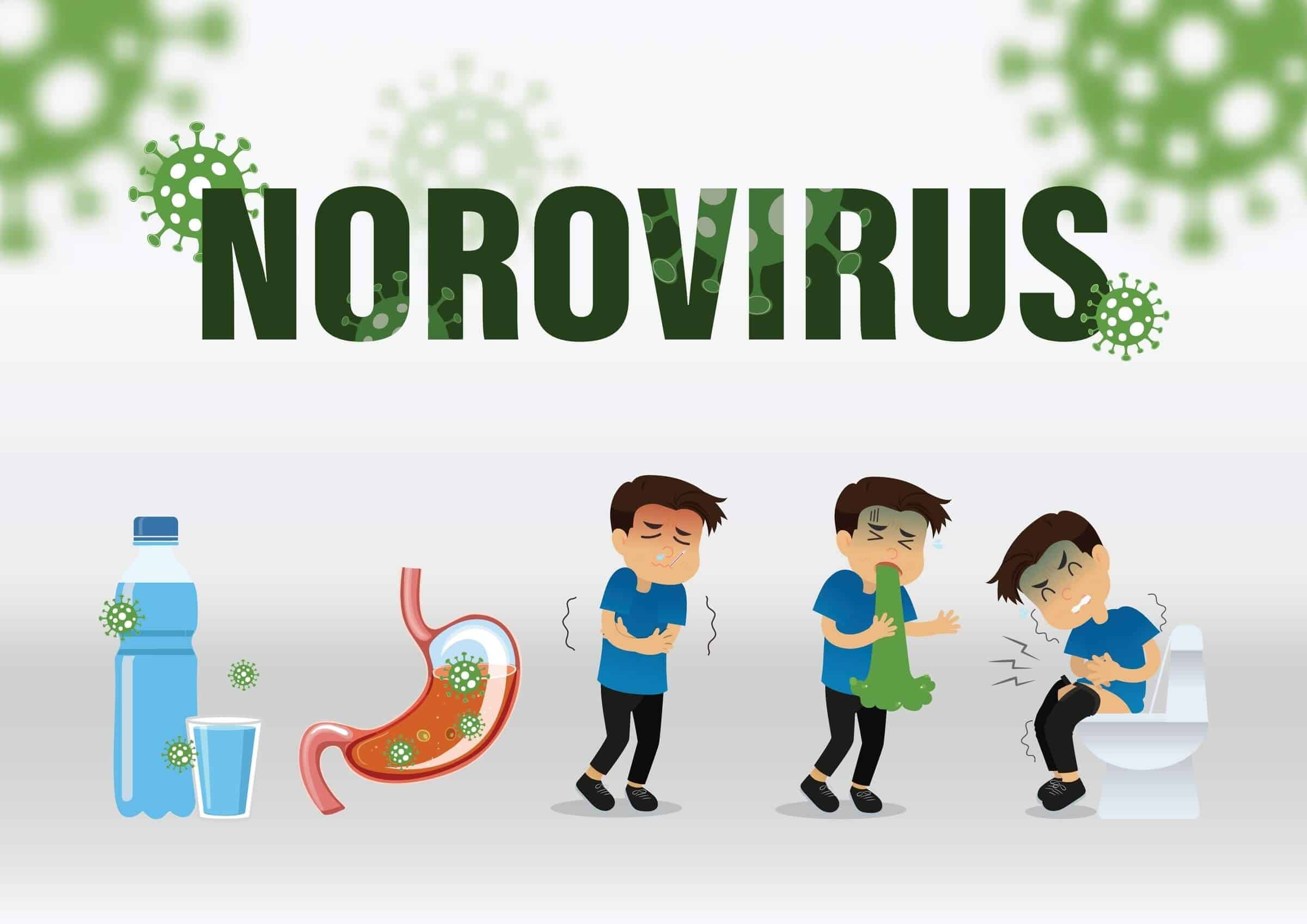 Medically reviewed by Dr Rick Singh – Chief Medical Officer at NextCare. Dr. Rick Singh, Board Certified in Family Medicine and trained in Emergency Medicine, completed his residency at ProMedica Flower Hospital in Ohio. Joining NextCare in 2014, he advanced through leadership roles before becoming Chief Medical Officer in February 2023.
Medically reviewed by Dr Rick Singh – Chief Medical Officer at NextCare. Dr. Rick Singh, Board Certified in Family Medicine and trained in Emergency Medicine, completed his residency at ProMedica Flower Hospital in Ohio. Joining NextCare in 2014, he advanced through leadership roles before becoming Chief Medical Officer in February 2023. Norovirus. The mere mention of this tiny virus can make your stomach churn. It’s the culprit behind those sudden, explosive bouts of vomiting and diarrhea that can leave you feeling like you’ve been hit by a truck. But here’s the thing: knowledge is power. By understanding norovirus infection symptoms and transmission, you can arm yourself with the tools to fight back and keep this nasty bug at bay.
So, let’s talk about the nitty-gritty of norovirus. What are the telltale signs? How does it spread like wildfire? And most importantly, what can you do to protect yourself and your loved ones? Get ready to take notes, because we’re about to dive into the world of norovirus infection symptoms and transmission.
At NextCare Urgent Care, we specialize in treating illnesses like norovirus, providing quick and effective care to help you feel better fast. Learn more about our comprehensive care for nausea and vomiting.
Understanding Norovirus Infection
- Understanding Norovirus Infection
- Key Facts About Norovirus
- Common Symptoms of Norovirus Infection
- How Norovirus Spreads
- High-Risk Environments for Norovirus Outbreaks
- Preventing Norovirus Infection
- Treatment and Recovery from Norovirus Infection
- Role of Health Care Providers in Managing Norovirus Infections
- Impact on Public Health
- Conclusion
Understanding Norovirus Infection
Norovirus infection, often called the stomach flu, is a highly contagious virus that causes a sudden onset of severe vomiting and diarrhea. It’s not the same as influenza, which is a respiratory illness.
This virus spreads easily through contaminated food, water, surfaces, and close contact with infected people. Norovirus infection symptoms and transmission are important to understand to prevent outbreaks.
Key Facts About Norovirus
⊕ Incubation Period: Symptoms appear 12-48 hours after exposure.
⊕ Duration of Illness: Most cases resolve in 1-3 days.
⊕ Risk Factors: Young children, older adults, and immunocompromised individuals are more prone to severe dehydration.
Prevention is key to avoiding outbreaks of norovirus infection.
Common Symptoms of Norovirus Infection
The hallmark norovirus symptoms include nausea, vomiting, diarrhea, and stomach cramping. These symptoms typically appear within 12 to 48 hours after exposure.
Gastrointestinal Symptoms
The primary symptoms are sudden and severe vomiting and diarrhea, often leading to dehydration if fluids are not replenished. Stomach cramps and abdominal discomfort are also common, adding to the overall distress caused by the virus.
Additional Symptoms
Beyond gastrointestinal distress, individuals may experience:
- ⊕ Nausea – A frequent precursor to vomiting, often causing general uneasiness.
- ⊕ Low-Grade Fever – A mild elevation in body temperature, usually below 100.4°F (38°C).
- ⊕ Muscle Aches and Headaches – Generalized discomfort, sometimes accompanied by fatigue.
- ⊕ Chills – A sensation of feeling cold without an actual drop in body temperature.
- ⊕ Stomach Pain – Persistent aching in the abdominal region, sometimes mistaken for food poisoning.
Norovirus Infection Symptoms
| Symptom | Description | Onset | Duration |
|---|---|---|---|
| Severe Dehydration (Risk Factor) | Dry mouth, dizziness, reduced urination, weakness | Can develop anytime | Can require medical attention |
| Vomiting | Sudden, forceful expulsion of stomach contents | Rapid onset | 1-3 days |
| Diarrhea | Frequent, watery stools leading to dehydration risk | Rapid onset | 1-3 days |
| Stomach Cramps | Abdominal pain and discomfort | Early symptom | 1-3 days |
| Nausea | Feeling of uneasiness, often preceding vomiting | 12-48 hours after exposure | 1-3 days |
| Muscle Aches | Generalized body aches, sometimes with fatigue | Early symptom | 1-3 days |
| Headache | Mild to moderate headache, often linked to dehydration | Early symptom | 1-3 days |
| Chills | Feeling cold despite normal or slightly elevated body temperature | Early symptom | 1-2 days |
| Low-Grade Fever | Mild fever (below 100.4°F / 38°C) | Early symptom | 1-2 days |
How Norovirus Spreads
Norovirus spreads easily and is highly contagious. You can catch it in several ways:
- ⊕ Person-to-Person Contact – Direct interaction with an infected individual, such as shaking hands, caring for them, or sharing food and utensils.
- ⊕ Contaminated Surfaces – The virus can survive on surfaces for days or even weeks. Touching contaminated objects and then touching your mouth increases the risk of infection.
- ⊕ Aerosolized Particles (Airborne Transmission) – Norovirus can become airborne when an infected person vomits forcefully. Tiny viral particles can linger in the air and settle on nearby surfaces, making transmission possible even without direct contact.
Contaminated Food and Water
Norovirus is a leading cause of foodborne illness. You can become infected by consuming food or water contaminated by:
- ⊕ Improper handling – Food prepared by an infected person who hasn’t washed their hands.
- ⊕ Raw or undercooked shellfish – Shellfish, such as oysters, can carry norovirus if harvested from contaminated waters.
- ⊕ Contaminated drinking water – Water sources can become infected with norovirus, especially in areas with poor sanitation.
Environmental Persistence
Norovirus is extremely resilient and can survive on surfaces like doorknobs, countertops, and bathroom fixtures for extended periods. It resists many standard cleaning products, making thorough disinfection with bleach-based cleaners essential to prevent further spread.
Close Contact Transmission
Being near someone infected with norovirus increases the risk of catching the virus. You can get infected by:
- ⊕ Caring for a sick person – Providing medical care, cleaning up after them, or handling their laundry.
- ⊕ Sharing personal items – Using the same towels, utensils, or cups as an infected person.
- ⊕ Touching contaminated surfaces – Then touching your mouth, nose, or eyes before washing your hands.
High-Risk Environments for Norovirus Outbreaks
Norovirus thrives in closed, crowded places like:
- ⊕ Hospitals
- ⊕ Nursing homes
- ⊕ Child care centers
- ⊕ Schools
- ⊕ Cruise ships
Norovirus outbreaks in these settings spread rapidly and can be hard to control.
Preventing Norovirus Infection
Norovirus spreads easily, but you can take simple and effective steps to reduce the risk of infection.
1. Practice Proper Hand Hygiene
Washing your hands with soap and water for at least 20 seconds is the best way to prevent norovirus. Hand sanitizers are less effective against norovirus, so always choose soap and water, especially:
- ⊕ After using the bathroom or changing diapers.
- ⊕ Before eating or preparing food.
- ⊕ After cleaning up vomit or diarrhea from an infected person.

2. Disinfect Surfaces Thoroughly
Norovirus can survive on surfaces for days or even weeks. Regularly disinfect high-touch surfaces like countertops, doorknobs, and bathroom fixtures using a bleach-based cleaner. Standard household disinfectants may not be strong enough to kill norovirus.
3. Follow Safe Food Handling Practices
Norovirus often spreads through contaminated food. Reduce your risk by:
- ⊕ Washing fruits and vegetables thoroughly before eating or preparing them.
- ⊕ Cooking oysters and other shellfish completely, as they can carry norovirus if undercooked.
- ⊕ Avoiding food preparation if you are sick and for at least 48 hours after symptoms stop.
4. Handle Contaminated Laundry with Care
- ⊕ Wash soiled clothes, towels, and linens immediately using hot water and detergent.
- ⊕ Wear disposable gloves when handling contaminated laundry.
- ⊕ Use the hottest dryer setting to help kill lingering germs.
By following these steps, you can greatly reduce your risk of norovirus infection and help prevent outbreaks in your home and community.
Treatment and Recovery from Norovirus Infection
There is no specific medication to treat norovirus, and antibiotics are not effective against viral infections. The key to recovery is staying hydrated and managing symptoms until the virus runs its course.
1. Stay Hydrated
Norovirus causes vomiting and diarrhea, which can quickly lead to dehydration. To stay hydrated:
- ⊕ Drink plenty of fluids—water, broth, or sports drinks with electrolytes.
- ⊕ Use oral rehydration solutions if experiencing excessive fluid loss.
- ⊕ Avoid sugary drinks, caffeine, and alcohol, as they can worsen dehydration.
2. Rest and Let Your Body Recover
Most people recover within a few days without medical intervention. Getting plenty of rest allows your immune system to fight off the infection.
3. When to Seek Medical Attention
Severe dehydration can be dangerous, especially for young children, older adults, and individuals with weakened immune systems. Seek medical care if you experience:
- ⊕ Severe dehydration symptoms, such as dizziness, rapid heartbeat, dry mouth, or little to no urination.
- ⊕ Persistent vomiting or diarrhea lasting more than three days.
- ⊕ Signs of extreme fatigue or confusion due to fluid loss.
By following these steps, most people recover from norovirus within 1 to 3 days without long-term health effects.
Role of Health Care Providers in Managing Norovirus Infections
Health care providers play a vital role in managing norovirus infections by:
- ⊕ Diagnosing norovirus based on symptoms
- ⊕ Advising patients on preventing dehydration
- ⊕ Treating severe dehydration with IV fluids when necessary
- ⊕ Educating patients and families on preventing the spread of norovirus
- ⊕ Reporting norovirus outbreaks to local health departments
Impact on Public Health
Norovirus isn’t just a personal problem, it’s a public health issue. Norovirus is highly contagious and can spread rapidly, causing large outbreaks. According to the CDC, norovirus causes 19 to 21 million cases of acute gastroenteritis in the U.S. per year. It leads to 56,000 to 71,000 hospitalizations and 570 to 800 deaths annually, mostly in young children and the elderly. Norovirus outbreaks can close schools, nursing homes, and hospitals, leading to significant economic and social disruption. Preventing and controlling norovirus outbreaks is crucial to protecting public health.
Key Takeaway:
Norovirus causes sudden, severe vomiting and diarrhea. It’s highly contagious, spreading through contaminated food, water, surfaces, and close contact with infected people. Prevent outbreaks by washing hands often, cleaning surfaces with bleach-based cleaners, cooking shellfish thoroughly, and avoiding food prep when sick.
Vaccine Research
Efforts are underway to develop a vaccine against norovirus, a highly contagious virus responsible for gastroenteritis outbreaks. Moderna is currently conducting a phase 3 clinical trial of an mRNA-based vaccine targeting three norovirus strains. Early studies have shown promising antibody responses, and the ongoing trial aims to evaluate the vaccine’s effectiveness in preventing norovirus infections. If successful, this vaccine could significantly reduce the incidence of norovirus-related illnesses.
FAQs in Relation to Norovirus Infection Symptoms and Transmission
Norovirus primarily spreads through contaminated food, water, surfaces, and direct contact. However, vomiting can aerosolize the virus, allowing particles to briefly become airborne before settling on surfaces. Touching contaminated surfaces poses a higher risk than airborne transmission.
Yes, close contact with an infected person increases the risk. You can catch norovirus by touching contaminated objects or surfaces and then touching your mouth, or by sharing food, drinks, or utensils.
The most frequent transmission occurs by:
- ⊕ Eating food prepared by an infected person who hasn’t washed their hands properly.
- ⊕ Drinking contaminated water from sources exposed to the virus.
- ⊕ Touching infected surfaces and then touching your face before washing hands.
When an infected person vomits, norovirus particles can become airborne and settle on surfaces. While they don’t remain airborne for extended periods, surfaces and objects can retain the virus for days, making cleaning with bleach-based disinfectants essential.
Norovirus is often mistaken for food poisoning or the flu, but key differences include:
- ⊕ Norovirus: Sudden onset of nausea, vomiting, diarrhea, and stomach cramps within 12-48 hours of exposure. Symptoms last 1-3 days.
- ⊕ Food Poisoning: Symptoms appear within hours of eating contaminated food and may include fever and stomach pain.
- ⊕ Flu (Influenza): Causes fever, body aches, cough, and respiratory symptoms, which norovirus does not.
Though both are viruses, they affect different systems:
- ⊕ Norovirus: Primarily causes gastrointestinal symptoms (vomiting, diarrhea, stomach cramps).
- ⊕ COVID-19: Causes respiratory symptoms (cough, fever, difficulty breathing) but can also include gastrointestinal issues in some cases.
- ⊕ Transmission: Norovirus spreads through contaminated food, surfaces, and person-to-person contact, while COVID-19 spreads mainly through respiratory droplets.
There is no direct evidence that norovirus causes diabetes. However, some studies suggest that severe viral infections, including norovirus, may play a role in triggering autoimmune responses in genetically predisposed individuals, which could contribute to Type 1 diabetes. More research is needed to confirm a link.
Norovirus itself does not directly cause miscarriage, but severe dehydration from prolonged vomiting and diarrhea can pose risks during pregnancy. If you are pregnant and experiencing severe dehydration, dizziness, or an inability to keep fluids down, seek medical attention immediately.
If you contract a stomach virus like norovirus during pregnancy, focus on:
- ⊕ Staying hydrated: Drink small sips of water, broth, or electrolyte solutions.
- ⊕ Eating light: Stick to easy-to-digest foods like crackers, bananas, and rice.
- ⊕ Resting: Allow your body time to recover.
- ⊕ Seeking medical care: If you experience severe dehydration, dizziness, or persistent vomiting, contact your doctor.
Conclusion
Norovirus infection symptoms and transmission may seem daunting, but with the right knowledge and precautions, you can significantly reduce your risk. Remember, this highly contagious virus spreads through contaminated food, water, surfaces, and close contact with infected individuals.
By practicing proper hand hygiene, disinfecting surfaces, and being cautious when preparing food, you can be a norovirus warrior. And if you do fall victim to this stomach bug, rest assured that most people recover completely within a few days.
Armed with this information, you’re now equipped to face norovirus head-on. Share this knowledge with others and help create a community that’s better prepared to prevent and manage norovirus outbreaks. Together, we can keep this pesky virus at bay and enjoy a healthier, happier life.
If you do catch norovirus, most people recover within a few days with rest and proper hydration. However, persistent symptoms may require medical attention. At NextCare Urgent Care, we offer expert treatment for nausea, vomiting, and dehydration, helping you recover faster.

